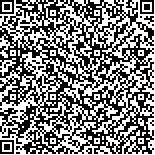| 引用本文: | 张卓,杨波,崔洲平,林子燚,谢子强,郑惠娜,廖宝林,肖宝华,朱春华.亚热带珊瑚礁海域枯水季pCO2的分布特征及CO2汇源转换机制-以深圳杨梅坑海域为例[J].海洋科学,2023,47(11):45-56. |
| |
|
| |
|
|
| 本文已被:浏览 230次 下载 166次 |

码上扫一扫! |
|
|
| 亚热带珊瑚礁海域枯水季pCO2的分布特征及CO2汇源转换机制-以深圳杨梅坑海域为例 |
|
张卓1, 杨波2,3, 崔洲平2, 林子燚2, 谢子强2, 郑惠娜2,4, 廖宝林2, 肖宝华2, 朱春华1
|
|
1.广东海洋大学水产学院, 广东 湛江 524088;2.广东海洋大学深圳研究院, 广东 深圳 518108;3.清华大学深圳国际研究生院, 广东 深圳 518055;4.广东海洋大学食品科技学院, 广东 湛江 524088
|
|
| 摘要: |
| 由于存在极高的初级生产和高效的碳代谢速率, 珊瑚礁海域二氧化碳(CO2)的汇/源属性仍存有争议。为明晰中国典型珊瑚礁海域CO2的汇源属性及驱动因素, 作者基于2022年11月(秋季)和2023年2月(冬季)在深圳杨梅坑海域的调查结果并结合室内培养实验所获得的数据, 探究了枯水季节典型亚热带珊瑚礁海水二氧化碳分压(pCO2)的分布特征及主要控制机制。结果表明, 调查期间pCO2的变化较大, 其范围为233.3~465.3 μatm。秋季表现为大气CO2的汇, CO2吸收通量为1.66±0.41 mmol C/(m2/d);冬季表现为大气CO2的弱源, 其释放通量为0.36±0.17 mmol C/(m2/d)。调查期间(枯水季)杨梅坑海域受淡水输入的影响较小, 季节性温度影响下的生物过程是驱动pCO2变化的关键因素, 其贡献pCO2总变化量的73.6%(表层)和66.5%(底层)。其中, 浮游植物光合作用的季节差异是导致海水CO2汇源转变的主要成因, 而微生物呼吸作用的影响甚微。相比较, 物理过程(CO2海-气交换、温度和盐度变化)对pCO2的影响相对较小, 其作用结果远低于生物过程。此外, 珊瑚的代谢活动对杨梅坑局部海域pCO2分布产生一定影响, 造成礁区pCO2值高于非礁区。因此, 海气CO2通量估算中不能忽视局部海域珊瑚代谢作用的影响。 |
| 关键词: 珊瑚礁 CO2分压 海气CO2通量 源汇特征 杨梅坑海域 |
| DOI:10.11759//hykx20230426001 |
| 分类号: |
| 基金项目:深圳市可持续发展专项(KCXFZ20211020165547011);中国博士后科学基金资助项目(2022M721792);广东省基础与应用基础研究基金资助项目(2023A1515012204);广东省基础与应用基础研究基金资助项目(2022A1515110345) |
|
| Distribution characteristics of pCO2 and source-sink conversion mechanism of CO2 in a subtropical coral reef water during the dry season: A case study of the Yangmeikeng Sea area in Shenzhen, China |
|
ZHANG Zhuo1, YANG Bo2,3, CUI Zhou-ping2, LIN Zi-yi2, XIE Zi-qiang2, ZHENG Hui-na2,4, LIAO Bao-lin2, XIAO Bao-hua2, ZHU Chun-hua1
|
|
1.College of Fisheries, Guangdong Ocean University, Zhanjiang 524088, China;2.Shenzhen Institute of Guangdong Ocean University, Shenzhen 518108, China;3.Shenzhen International Graduate School, Tsinghua University, Shenzhen 518055, China;4.College of Food Science and Technology, Guangdong Ocean University, Zhanjiang, 524088, China
|
| Abstract: |
| Due to the extremely high primary production and efficient carbon metabolism rate, the sink/source properties of carbon dioxide (CO2) in coral reef waters are still controversial. This study aims to explore the distribution characteristics of the seawater partial pressure of carbon dioxide (pCO2) and its main control mechanisms in a typical subtropical coral reef during the dry season based on field surveys conducted in the Yangmeikeng Sea area of Shenzhen, China in November 2022 (autumn) and February 2023 (winter) and the data obtained from indoor culture experiments. The investigation reveals a significant pCO2 variation that ranges from 233.3 to 465.3 μatm. In autumn, the study area acts as a sink for atmospheric CO2, yielding an absorption flux of 1.66±0.41 mmol C/m2/day. Conversely, in winter, it is a weak source of atmospheric CO2, depicting an emission flux of 0.65±0.14 mmol C/m2/day. The Yangmeikeng Sea area notably experiences minimal influence from the freshwater input. The biological process under the seasonal temperature influence is the key factor driving the seasonal variation of pCO2, which contributes 73.6% (surface) and 66.5% (bottom) of the total variation. The seasonal difference of the phytoplankton photosynthesis is the main cause of the seawater CO2 transformation from sink to source, while the effect of the microbial respiration is weak. In comparison, physical processes, such as the sea–air exchange of CO2 and the temperature and salinity changes, have a weaker effect on the pCO2 dynamic than that of biological processes. The metabolic activity of corals also has a noteworthy impact on the pCO2 distribution in the local sea area of Yangmeikeng, resulting in a higher pCO2 value in the reef area than in the non-reef area. Thus, the influence of the coral metabolism in the local sea area cannot be ignored when estimating the air–sea CO2 flux. |
| Key words: Coral reefs CO2 partial pressure Air-sea CO2 flux source-sink characteristics Yangmeikeng sea area |
|
|
|
|
|
|
